0.0(0)
Explore Top Notes Note
Note Studied by 193 people
Studied by 193 people Note
Note Studied by 8 people
Studied by 8 people Note
Note Studied by 157 people
Studied by 157 people Note
Note Studied by 154 people
Studied by 154 people Note
Note Studied by 2 people
Studied by 2 people Note
Note Studied by 21 people
Studied by 21 people
AP HUG Unit 6 Urbanization Topics
5.0(1)
Principles and Elements of Interpersonal Communication (ch2)
5.0(1)
1.1 Periodic Table
4.3(3)
Chapter 1: An Introduction to the Human Body
4.9(17)
Matter - PS.2
5.0(1)
CHAPTER 8: BASIC CONCEPTS OF CHEMICAL BONDING
5.0(1)
Lecture 14 – Anatomy of Articulation.docx
Lecture 14 – Anatomy of Articulation
04.03.24
- Cavities of the Vocal tract (cont’d)
- Buccal cavity:
- plays a role in oral resonance and high-level consonant production
- Lies lateral to oral cavity between teeth and cheeks
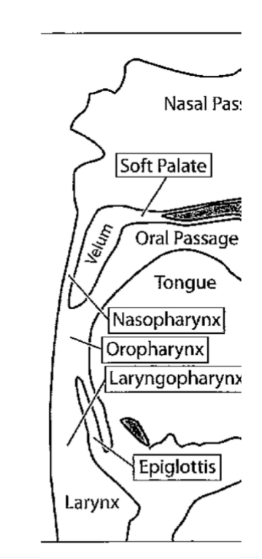 Pharyngeal cavity (pharynx)
Pharyngeal cavity (pharynx)- Shape altered by pharyngeal constrictor muscle, laryngeal elevation and depression
- Type of pharyngeal cavities
- Nasopharynx – above the soft palate, contains pharyngeal tonsils (adenoids); lateral wall contains Eustachian tube – aerates the middle ear
- Oropharynx – posterior to fauces, above is velum
- Laryngopharynx (hypopharynx) – anterior epiglottis, inferior esophagus
- Velopharyngeal port (VPP) – opening between oropharynx and nasopharynx
- Buccal cavity:
- Q: what is the primary function of the nasal cavity (apart form smell)?
- A: warm air: protect lungs
- B: humidify air: protect lungs
- Also helps prevent particles from entering respiratory trac (filters air) and helps in vowel production but these aren’t exactly the “primary functions”
- Cavities (cont’d)
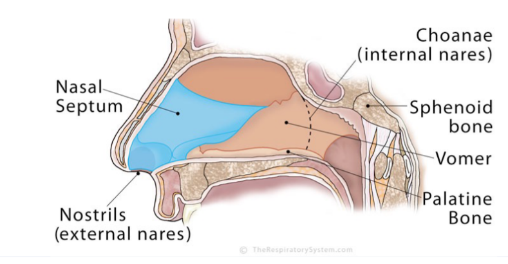 Nasal cavities
Nasal cavities- Warms and humidifies air to protect the lungs
- Fine nasal hairs prevent particles form entering lower respiratory tract
- Nares – anterior boundary; floor is hard palate
- Nasal choanae – posterior portals connecting nasopharynx and nasal cavities
- Muscles of the face and mouth
- Tongue and mouth muscles
- Tongue
- Velum
- (pharynx)
- Lips and lip muscles
- Movement for speech depends on muscle of the face
- Important in both facical expression and speech
- Richly invested with vascular supply
- Have social,cultural and aesthetic value
- (Face muscles)
- Mandible muscles
- Tongue and mouth muscles
- Q: which of the two lips is more mobile and stronger?
- B: lower lip
- Lips
- The lower lip versus the upper lip
- The lower lip is
- Faster and stronger than the upper lip
- Achieves a greater velocity and force
- Does most of the work in lip closure
- Attached to the mandible – a moveable articulator
- Can accommodate a variety of jaw positions
- Resistant to interference
- Lip muscles
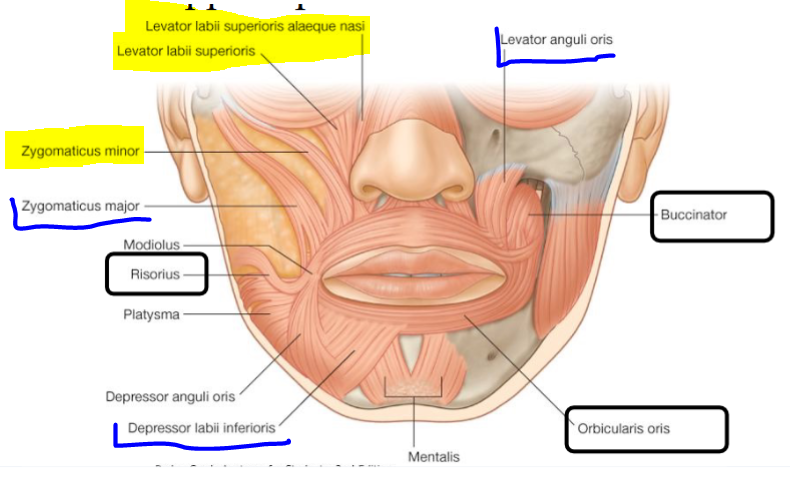 Orbicularis oris – encircling mouth opening
Orbicularis oris – encircling mouth opening- Risourius – superficial – retracts corner of mouth
- Buccinator – deep to resourius, retracts corner of mouth, involved in mastication
- Levator labii superioris, zygomatic minor, levator labii superioris, alaeque nasi – elevate upper lip
- Levator anguli oris – draw mouth up and medially
- Zygomatic major – elevate and retract angle of the mouth – smiling
- Depressor labii inferioris – pull lip down and out
- The lower lip versus the upper lip
- The mandible – structure and landmarks
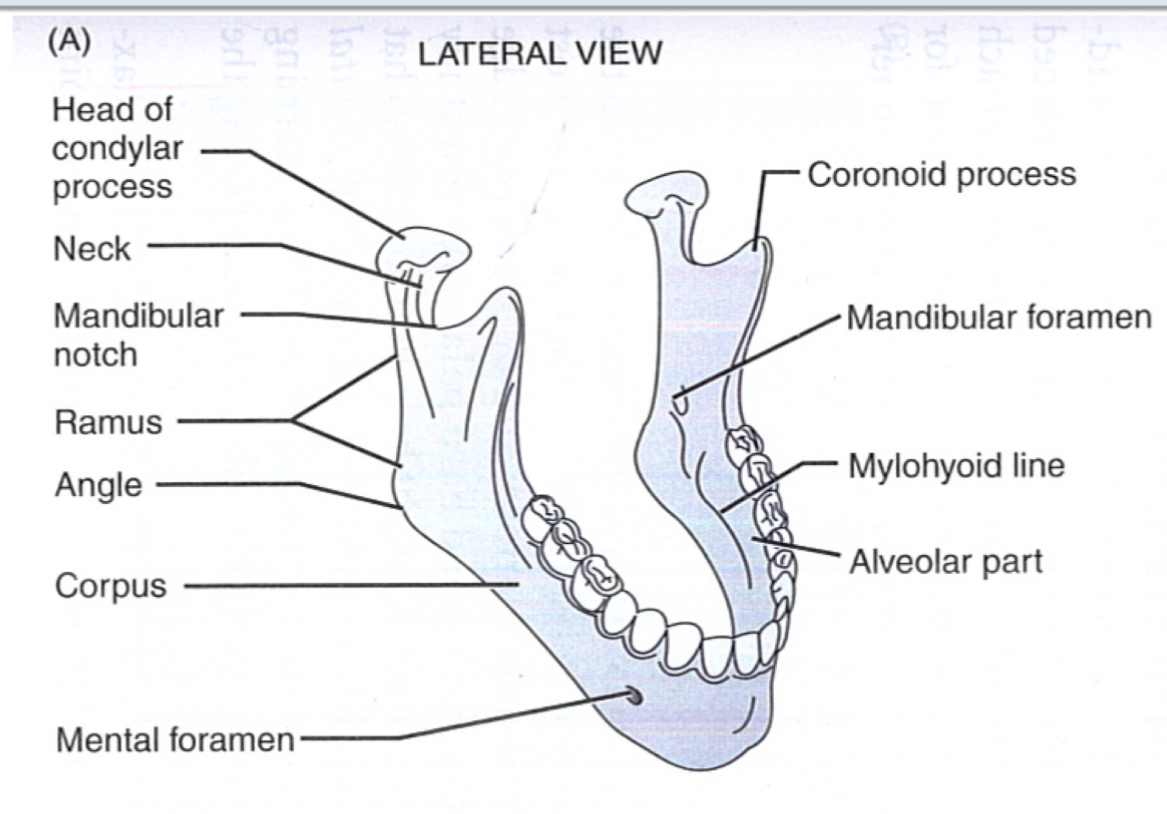
- Q: why is the mylohyoid line called like that?
- \o/
- A: it is the anatomical boundary between myloid and hyoid – WRONG
- C: it is the site of origin of the mylohyoid muscle
- It is a bony ridge on the internal surface of the mandible
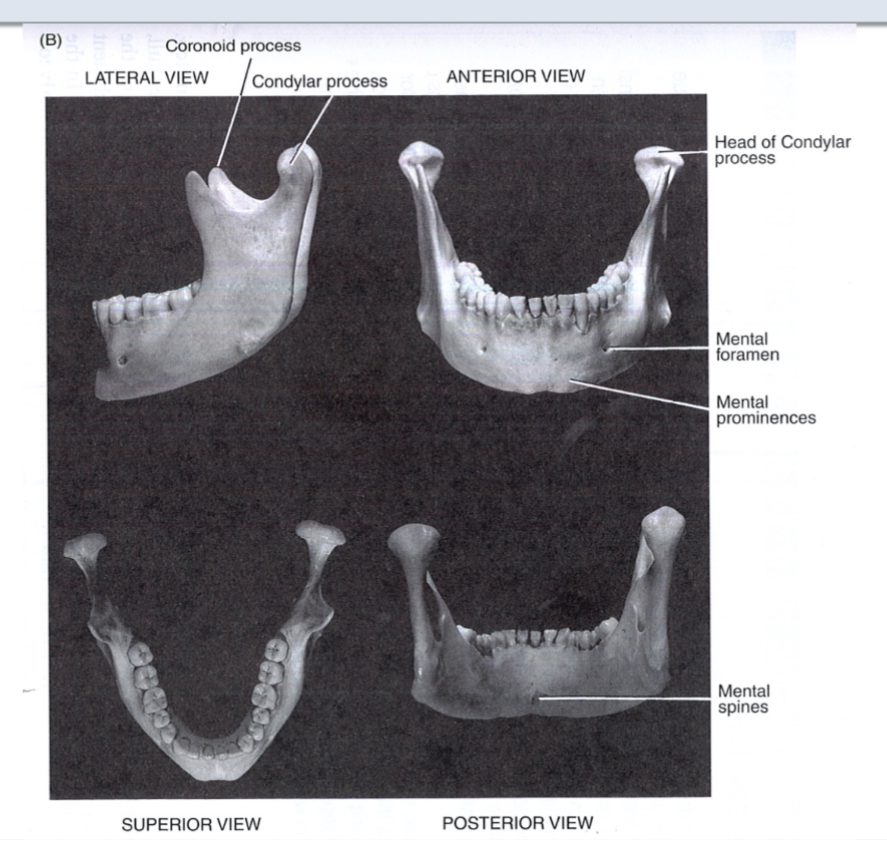
- Plays a role in speech (🡪 jaw opening and closing)
- Assists the lips – important supportive role
- Changes position for tongue movement
- Can tightly close when necessary
- Position for speech is one of dynamic tension between antagonists
- Mandibular elevator muscles have muscle spindles
- Helps to counteract gravity
- Plays major role in mastication
- Central pattern generator within brainstem
- Produced muscular contraction for chewing
- Must elevate, grind laterally and depress
- Requires coordinated activation of elevators and depressors
- Central pattern generator within brainstem
0.0(0)
Explore Top Notes Note
Note Studied by 193 people
Studied by 193 people Note
Note Studied by 8 people
Studied by 8 people Note
Note Studied by 157 people
Studied by 157 people Note
Note Studied by 154 people
Studied by 154 people Note
Note Studied by 2 people
Studied by 2 people Note
Note Studied by 21 people
Studied by 21 people
AP HUG Unit 6 Urbanization Topics
5.0(1)
Principles and Elements of Interpersonal Communication (ch2)
5.0(1)
1.1 Periodic Table
4.3(3)
Chapter 1: An Introduction to the Human Body
4.9(17)
Matter - PS.2
5.0(1)
CHAPTER 8: BASIC CONCEPTS OF CHEMICAL BONDING
5.0(1)
 Knowt
Knowt